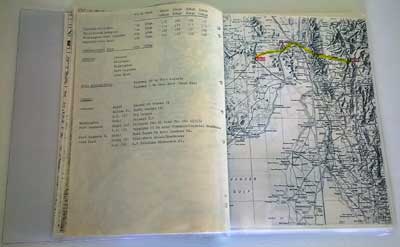1984 Australian Cannonball Cup
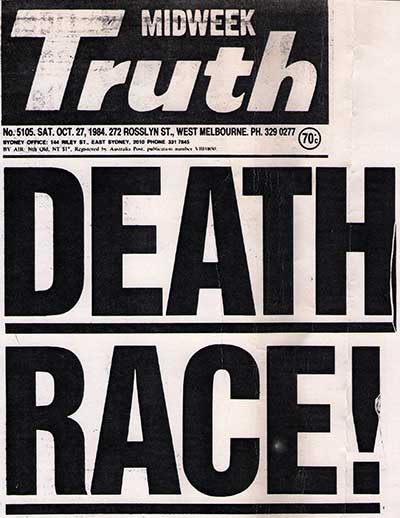
Just a week before the scheduled start of the 1984 Australian Cannonball Cup the front-page headlines of Melbourne's Truth newspaper read "Death Race!" and the publicity caused all sorts of problems for the event's organisers, competitors, and for the race.
The word "race" was never used by the organisers when talking of the Cannonball Cup, but they defined the event like this: "The concept of a Cannonball run is to drive between two points non stop in the best possible time, without being intercepted by the Police."
76 teams had entered, responding to advertisements they had seen earlier in the year and lured by either the $10,000 first prize or just being part of an Australian "Cannonball Run".
After the negative publicity and threats of severe penalties to participants from the police, over 40 teams pulled out leaving a still considerable 33 to start the race in the early evening of Friday, 2 November.
It didn't help that participants were promised anonymity but somehow the same newspaper got hold of the entry list and published all of their names.
The Cannonball Cup was a race from Melbourne, Victoria, to Perth, Western Australia. Fastest team wins.
Most of the teams consisted of car enthusiasts up for the challenge. There were several truck drivers and some drivers with professional motorsport experience. Each team paid $550 to enter.
In addition to the prize money, the organisers promised a glamorous event with parties, luxury accommodation, a lavish awards ceremony and a big finish including "marching girls and brass bands".
They promised air support throughout the race, including radios so teams could be warned of upcoming police presence. They also offered discounted radar detectors to participants.
Most of the cars were Australian muscle cars from the era, and many of the teams bought and built cars specifically for the race. A couple of teams competed in rental cars.
Many of the vehicles were modified with larger fuel capacity to significantly extend their range (even one of the rental cars), and some had extra safety features like roll cages and race harnesses. The most common additions were CB radios, police scanners and radar detectors.
A few of the teams had organised sponsorship but most sponsors pulled out prior to the race when it was receiving bad publicity in the media and police attention.
One team that stood out for the preparation and presentation was the Ford Fairlane entered by businessman Andre Razums with teammates Lance Dickinson and Steven Mehes. Razums had a supercharged Ford Fairlane built just for the race which he named the Trans Aust, and the team all wore the same t-shirts with sponsor and supporter logos. They had a tow truck and crew with them at the start.
There was a prize for fancy dress and one team dressed as a bride and groom and decorated their car with typical "Just Married" type signage and paraphernalia. Another team dressed like priests, emulating Sammy Davis Jr and Dean Martin's disguise from the original Cannonball Run movie.
The regulations said that the race was open to anyone with a current drivers' license and a roadworthy vehicle. Either two or three drivers were allowed per car. The regulations also stated that teams would be excluded from the results if they caused obstruction, drove dangerously or were the cause for serious complaint by the police or public.
By the time of the drivers' briefing, the day before the race, organiser David Adamson was urging drivers not to get caught for any serious offences, obviously under pressure from the police and media and wanting to ensure the opportunity to run again the next year.
The start was originally planned to be from a shopping centre in Melton but was changed at the last minute after concerns about the possibility of the media and tens of thousands of spectators turning up, and also competitors having to drive through busy suburban streets.
The new start location was kept secret and teams were only advised by telephone a few hours before the scheduled start time. It was from a private farm in the suburb of Digger's Rest, about 30 kilometres north-west of the Melbourne CBD. The farm was owned by local real estate agent, Stan Payne.
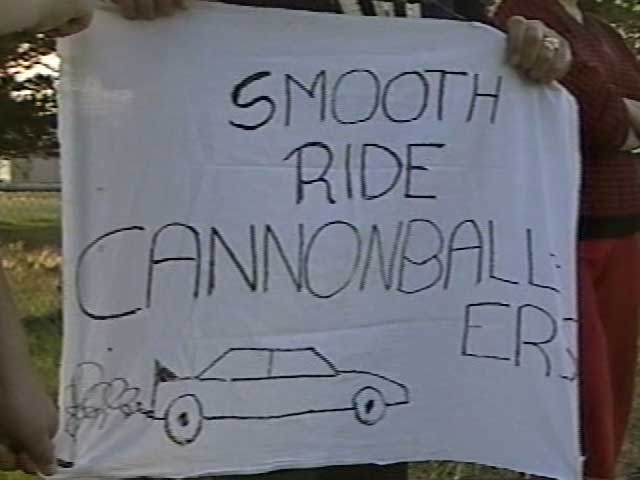
Despite the organisers' attempt at secrecy, hundreds or possibly thousands of spectators turned up and lined the highway outside the farm. The media were also present but were not allowed in.
The police had been advised of the location and were set up at the entry to the farm, photographing and recording details of each of the competing cars.
Once teams had arrived at the farm a ballot was drawn for starting positions. Teams would leave at two-minute intervals.
From around 7 pm inside the farm, each team took their place at the start line and were each counted down to their allocated start time. They had to drive down the farm's long driveway and then join the Calder Highway, which was made difficult because of the large number of spectators and heavy weekend traffic.
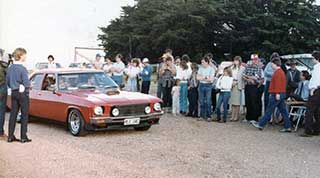
First to start was the Holden HQ Monaro driven by Jerry Reinisch, Jerry Revay and Lucas Hagan. Like most of the following teams, it took them several minutes to find a gap in traffic to get on to the highway.
Due to suspect roadworthiness and the likely resulting issues with the waiting police, Andre Razums elected to start the race with his car on the back of a tow truck. Some distance from the start the car hit the road under its own power.
The organisers had a helicopter present at the start that was used to film the competitors leaving as part of a planned one hour documentary about the race. There were also other helicopters hovering overhead, possibly the police and media.
Most teams took the main route on their way to the first checkpoint, located at Berri in South Australia, just across the border from Victoria and over 650 km/h from the start, but many took alternate routes - some much longer distances - to avoid traffic and police.
A film crew attempted to follow the race and recorded several of the teams being caught by police, as well as their own driver being booked trying to keep up.
One team didn't make it to the first checkpoint. The Ford LTD of David Westbury, David Krant, Darren Mcmullen broke down in the early morning not far from Berri and couldn't continue. Not wanting to completely miss out on the event, the team waited until a nearby used car dealer opened in the morning and bought a cheap car to get them to Perth.
Also out of the race early on was the very fast team of Ray Ellis and James Maude. Ellis drove in various forms of motorsport including touring cars and Maude was a renowned rally navigator. Somewhere around the checkpoint in the middle of the night, they hit a hare and damaged their Brock Commodore's steering. Not able to continue at a reasonable speed without repair, they weighed up their chances of winning and decided to pull out.
The police were very harsh on the competitors throughout South Australia. Many teams were stopped, most for no valid reason other than to delay them with time-consuming roadworthy checks.
A Ford Falcon XB GT sedan driven by Graham Stevenson and Chris Colangelo suffered a distributor problem close to Port Augusta and had to wait overnight for a local garage to do a temporary repair. They lost too much time and decided to return home instead of continuing on.
In Port Augusta police set up a roadblock on a bridge to stop the teams. Only a few made it through before the block was set up but most of the remaining teams were stopped and subjected to time-wasting roadworthy checks.
Walter Hollier and Greg Bailey were one of the first teams to arrive at the roadblock, just as police were setting up. They opted to look for a way around the block, not wanting to be stopped, but eventually gave up and tried their luck following a group of other cars across the bridge. But police knew they were part of the race and put them off the road for a trivial vehicle defect.
A few teams were able to sneak through the block. Some like the Holden panelvan driven by Wayne Haw, Allan Fielding and Jeff Haire used confidence and stealth to get through. Andre Razums knew his wild-looking supercharged Ford Fairlane would be stopped so arranged a local friend to trailer the car through the roadblock.
The trip across the Nullarbor resulted in several of the teams being caught for speeding, some tracked by police aircraft.
Warwick Jacobson, driving a Mazda 626 – the race's only Japanese made car, and the only one with four cylinders – was stopped and booked for driving too close to the car in front, the result of attempting to slipstream to conserve fuel.
A few of the drivers were suffering from fatigue after travelling non-stop through the night, and the long and monotonous 1,250 km trip on the Eyre Highway across the Nullarbor caused some to hallucinate. Jock Calder thought he was seeing large animals and Jim Rosenthal thought there were large buildings beside the road. Allan Fielding thought he was driving a tram and stopped in the middle of nowhere to let imaginary passengers off.
The Western Australian police were even harder on teams that the South Australian police. Once across the border many teams were immediately followed and stopped by police. Several were defected for trivial reasons, including the Chrysler Charger entered by Alan Squires and Rick Wilcox that was impounded because the exhaust pipe did not extend the required distance from the body.
A couple of drivers were stopped for exceeding speed limits, some by considerable amounts, and were taken by police on a long journey to Norseman police station where they had to be bailed out. They were also required to return on Monday morning for a court appearance.
Russell Morton was one of the drivers taken to Norseman, more than 500 km away from where he was caught in Caiguna doing 180 km/h. He and teammate Andrew Csaszar had been leading for much of the race but were held up for a considerable time as Csaszar was forced to follow at the speed limit while Morton was taken by police car on a 5-hour journey where they were then held up further while he was booked and finally bailed out.
The second checkpoint was a considerable 2,700 kilometres away from the first checkpoint, in Albany, Western Australia. Albany was far from the most direct route to Perth and the police were caught off guard when teams turned south at Norseman.
Some of the teams arrived at the checkpoint much earlier than the organisers expected and before the checkpoint had even been set up. Charlie Kovacs and Len Walsh in the Holden 6-wheeler ute drove around Albany for some time unable to locate the checkpoint. John Hassard, Ian Bray and John Crowle were in the same situation and ended up calling race organisers from a public phone for instructions.
By the checkpoint, some of the teams were in desperate need of fuel, but being the middle of the night and a country town there were no petrol stations open. Two teams found a station that was closed but with an attached residence and were able to wake the owner by throwing stones on their roof. Fortunately, he was obliging and they were able to get the fuel they needed to continue.
Eventually, the Western Australia police reorganised themselves unexpected route got their act together and many of the teams were followed by police all the way to the finish in Fremantle.
First to arrive was Kovacs and Walsh, with the fastest race time of 32 hours, 22 minutes and 6 seconds.
They were closely followed by the ex-police Holden Commodore of John Hassard, Ian Bray and John Crowle, who had a fast and trouble-free run aside from some minor damage sustained in Victoria when they ploughed into some deep dirt when driving on dusty dirt back roads.
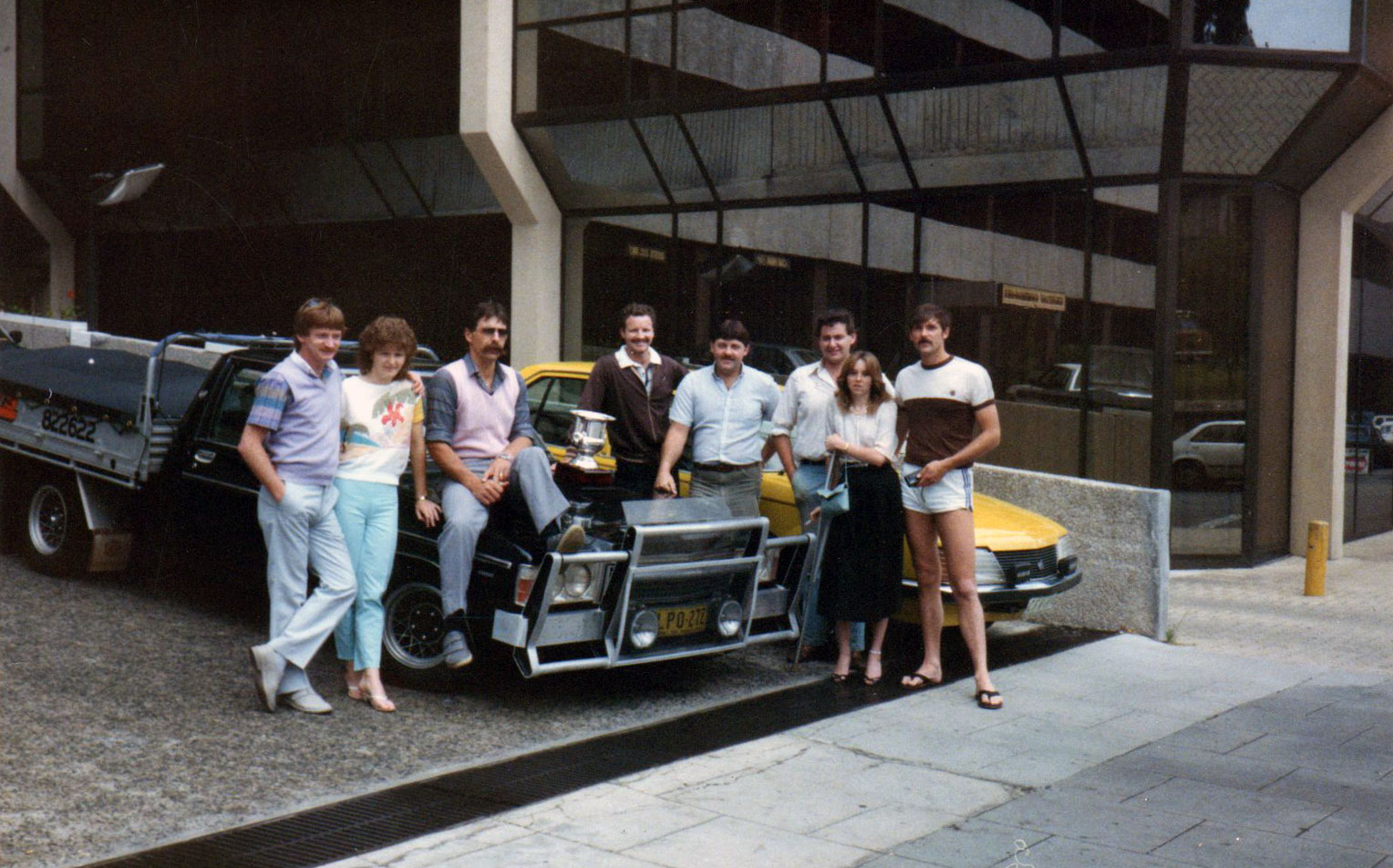
The ceremony, at the Kings' Ambassador Hotel in Perth, was MC'd by Graeme "Shirley" Strachan, most famous for being the lead singer of Skyhooks.
Kovacs and Walsh were provisionally awarded first place and given the trophy and prize cheque, and in their speech said they would be back to defend their title next year.
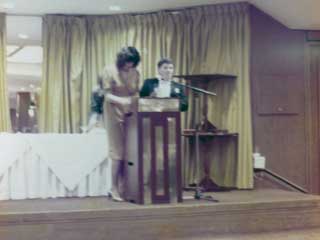
The fancy dress prize was awarded to Jacobson/Flanigan who dressed as newlyweds. A prize for the most determined team was given to Westbury/Krant/McMullen who had bought a car to get to the finish after their car was unable to continue.
When Kovacs later attempted to deposit the prize cheque, it bounced.
The organisers had learned that Kovacs had been booked by police in Victoria for a significant speeding offence (165 km/h) and disqualified the team. They stopped payment on the cheque and attempted unsuccessfully to recover the trophy. Hassard/Bray/Crowle were then awarded with first place and provided with another trophy and another $10,000 prize cheque, which also bounced.
Around this time the media were reporting that the organisers were unable to pay their debts, including hotels, airlines and entertainers. The company filming the race, Media World, also pulled out as a result of non-payment.
David Adamson did plan a second running in late 1985. In a press release, he attempted to clear up the financial situation and claimed that blank cheques (and competitor records) had been stolen so payments had to be stopped. He also explained that a large number of teams and sponsors pulled out resulting in financial problems.
The proposed 1985 event had an entry fee of $650 ($550 for returning entrants) and a $10,000 first prize and had a new route from Melbourne to Darwin, most likely to avoid the issues with the West Australian police. But it never ran.
In October 1985 Victorian Parliament was rushing through the "Cannonball Bill" just before the planned second running of the event. The bill included new laws intended to prevent future similar races of this type and hold the organisers responsible.
The route
According to Google Maps today, the route is approximately 3,783 kilometres. Estimated travel time at current legal speeds is 39 hours.
The first checkpoint was located at the corner of Riverside Avenue and Vaughan Terrace, Berri, South Australia. The second at the corner of York Street and Grey Street East in Albany, Western Australia.
The finish was at the corner of Collie Street and Marine Terrace, Fremantle, Western Australia.
The Saarelaht/Saarelaht/Seeberg team put together a folder of maps and route information that they had researched for the race, which you can download below. Note that the start was originally due to be from Melton, not Diggers Rest.
There's a lot more to know about the race, so read on to learn about the teams who participated...

